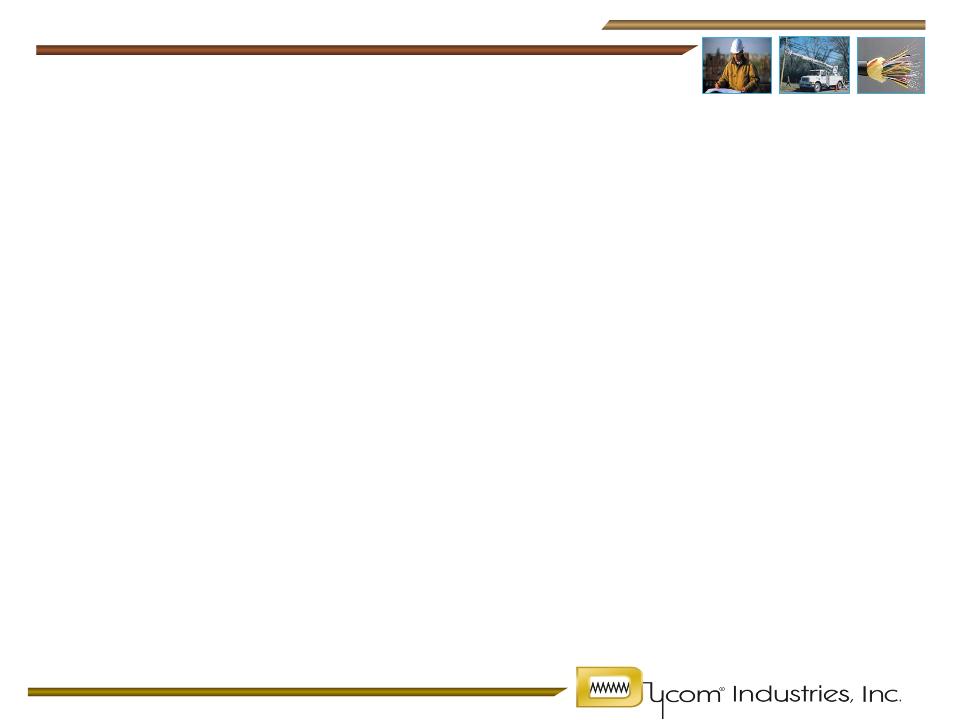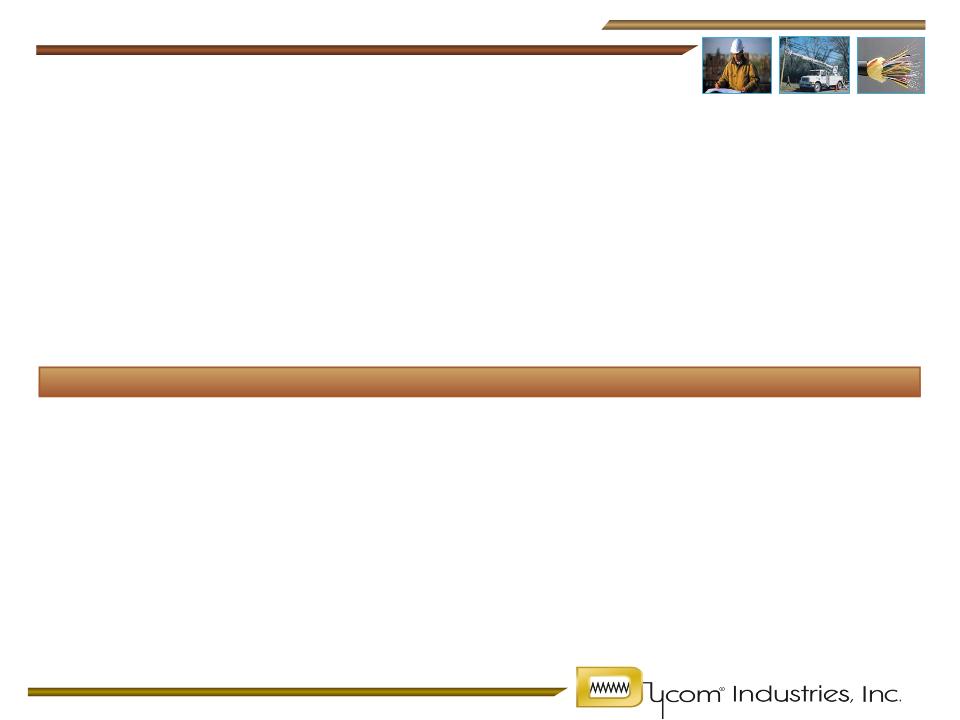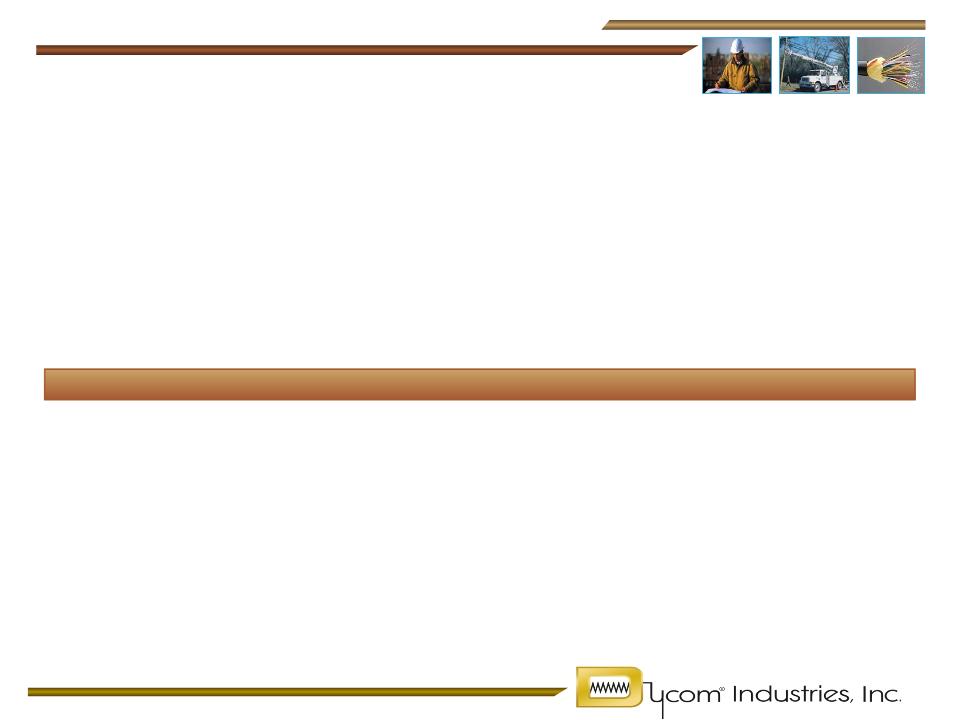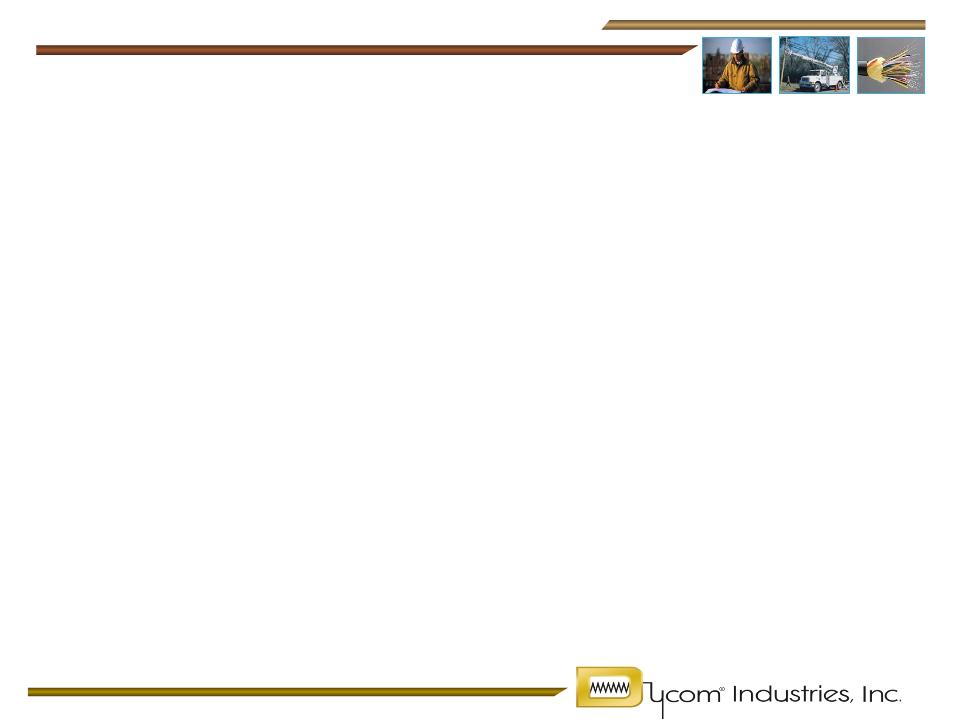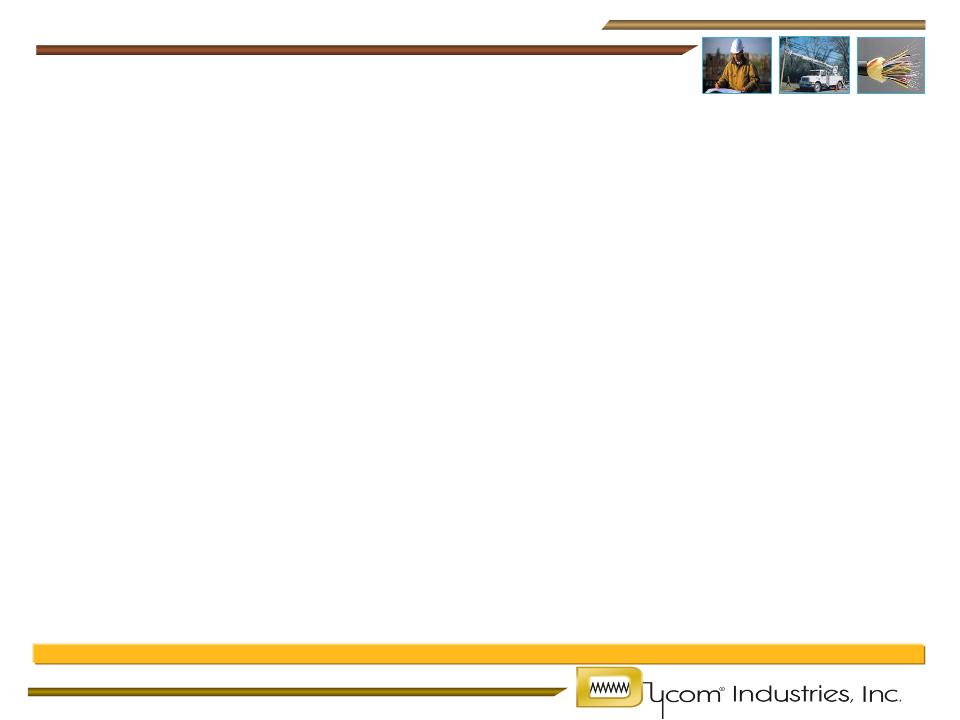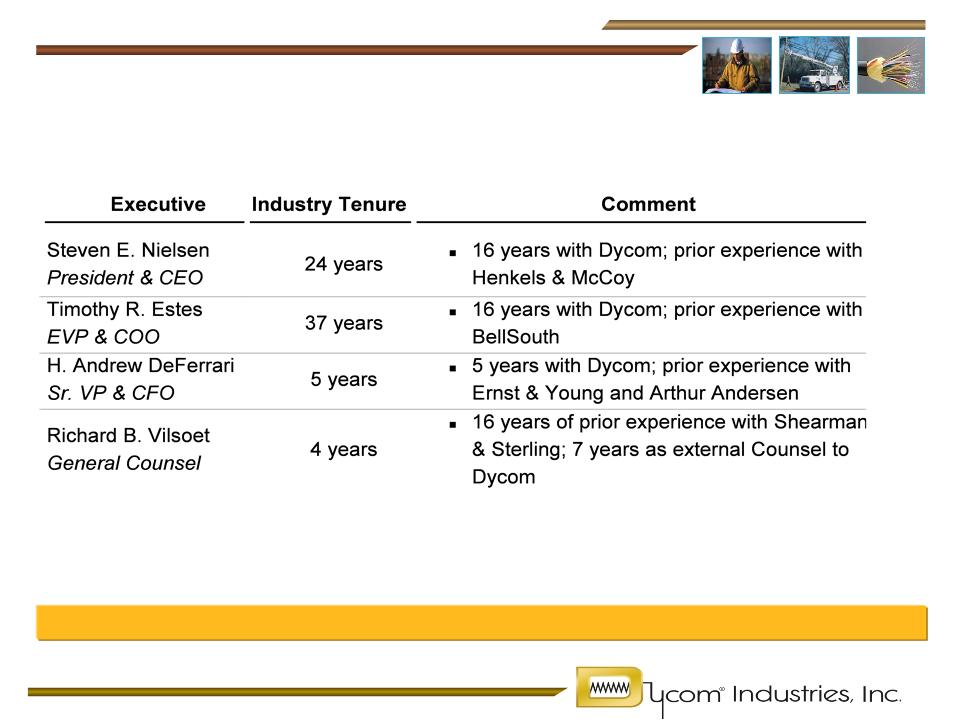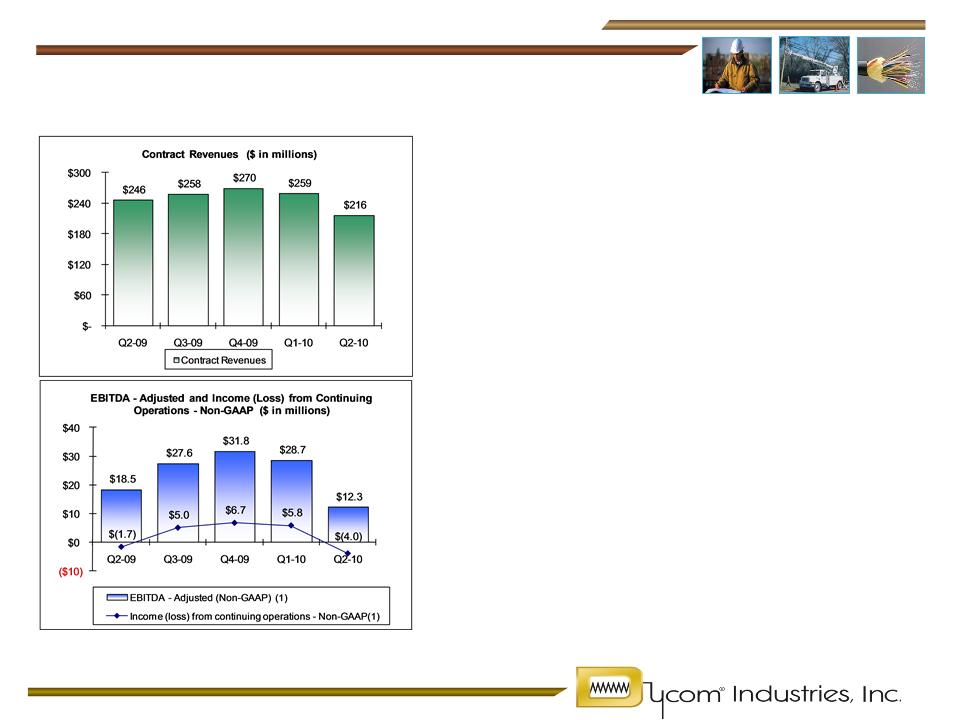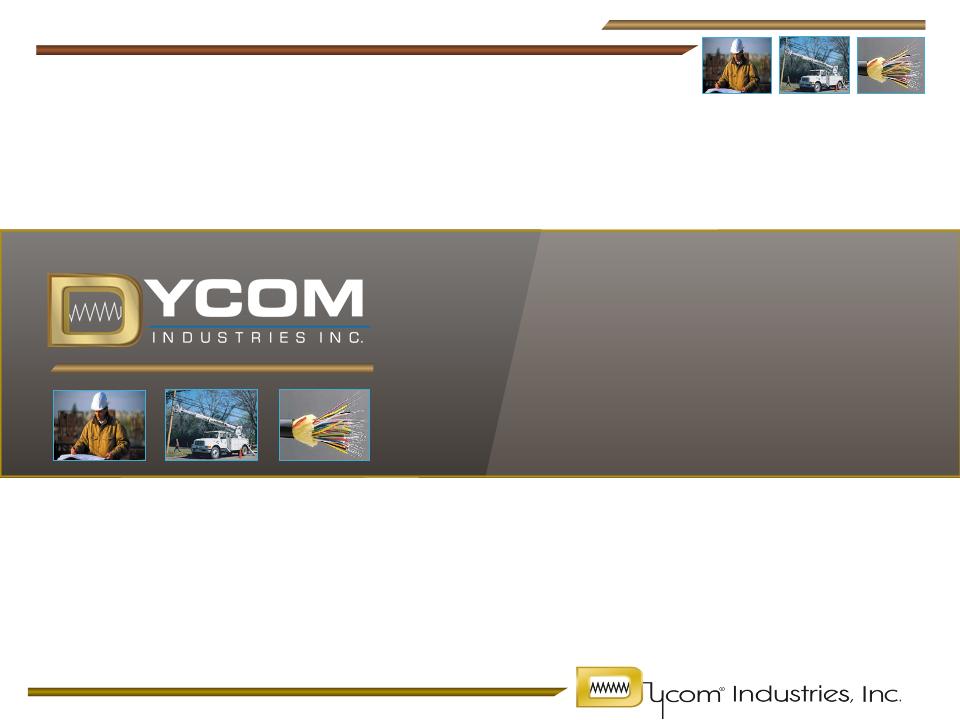Free signup for more
- Track your favorite companies
- Receive email alerts for new filings
- Personalized dashboard of news and more
- Access all data and search results
Filing tables
DY similar filings
- 3 Jun 10 Forward-Looking Statements and Non-GAAP Information
- 28 May 10 Departure of Directors or Certain Officers
- 27 May 10 Dycom Announces Fiscal 2010 Third Quarter Results
- 24 Mar 10 Forward-Looking Statements and Non-GAAP Information
- 25 Feb 10 Results of Operations and Financial Condition
- 24 Feb 10 Dycom Announces Fiscal 2010 Second Quarter Results
- 1 Dec 09 Regulation FD Disclosure
Filing view
External links








